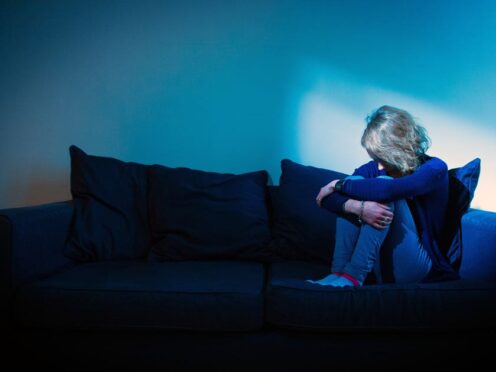A mental health watchdog raised concerns about the use of legal orders for “compulsory medication”, after an increase of nearly 50% in a decade.
Compulsory community treatment orders (CCTOs) were introduced in Scotland 20 years ago, to offer people with severe mental ill health the chance to get full support and treatment at home as they recovered.
A new report from the Mental Welfare Commission showed there has been a 44% increase, from 941 in 2012 to 1,333 in 2022.
Some people were subject to a CCTO for 17 years, the average was five years and nearly three-quarters of the orders were in place for more than two years, according to the report.
The authors of the report, titled Compulsory treatment for mental illness in the community – how is it working?, spoke to 92 people on a CCTO for more than two years, of whom 64.7% were male and 32.6% were female.
Interviews also took place with 29 relatives, and 322 medics and social work staff.
Some 72% of patients had a diagnosis of “schizophrenic type” illness, and 73% said they would prefer to be subject to a legal order rather than in hospital.
The legal orders “guarantee treatment in a crisis”, according to patients who were supportive.
However, it was warned in the report that beyond “compulsory medication” there was not enough interpersonal connection at review, and it was suggested that CCTOs could be perceived as a “threat of return to hospital”.
The report said that only a third of patients (33.1%) saw any positive benefits from being on it for two years or more, and 32 people had appealed against the order.
One person said being subject to the order allowed them to attend Slimming World, while another said they had a bath lift fitted, and one person got a job.
Other positive outcomes included being referred to a food bank, getting debts sorted out, and having “structure”.
Carers questioned were vastly supportive, with 93% saying compulsory measures were “appropriate”, and health workers raised concerns that patients would stop taking medication without the support.
However, the report said the care provided to people on orders for two years or more “did not seem materially different to packages of care and support offered to people on a voluntary basis”.
It also cited a lack of hope from those on the CCTOs, and a lack of “therapeutic” support, as well as concerns over the length of orders.
The Mental Welfare Commission said in a statement it “hopes that government can use the detail of this report to improve the management of CCTOs and improve the outcomes for this vulnerable group of people”.
Yvonne Bennett, senior manager, Mental Welfare Commission, said: “We saw the law being used to make people take prescribed medication for many years, but little evidence of planning to support the person to come off the order or receive care and support that might lead to a more positive future – often all they get is compulsory medication.
“We were also concerned to find that those responsible for reviewing compulsory community treatment orders don’t always personally know the individual very well before renewing the order.
“When we spoke to people on these orders and their relatives, they supported the situation because they said it guaranteed the individual would get treated if there was a crisis.
“We understand that but don’t think it’s right, people should not have to live under a legal order just so they get treatment when needed.
“These orders remain a useful way of working with an individual and their family in their home, rather than in hospital. But we ask why so many people are on them, and for so long, without the therapeutic support that can lead to recovery and a better life.”
She added: “Compulsory community treatment orders should not be defined by a threat of a return to hospital or removal of services. They should be in the context of a collaborative, comprehensive recovery-oriented and inclusive approach.”
A Scottish Government spokesperson said: “While the potential to support people with mental illness in the community, rather than in hospital, was described as a key benefit of community compulsory treatment orders – the report sets out a number of recommendations.
“To ensure they are addressed, these will be subject to formal follow-up and review by the commission.
“The report also supports the Scottish Mental Health Law Review’s recommendations around community compulsory treatment orders.
“We are finalising a delivery plan in response which will also consider the findings of the report in relation to improving early intervention and prevention along with changes in practice to support recovery.”
